27 Jun 2023
From 8 to 11 June, Xi’an Jiaotong-Liverpool University presented the talents of its academics at Design Shanghai, an annual event that draws top designers and industry professionals from around the world.
XJTLU’s exhibition, “Design as Process”, featured a collection of creative works that demonstrate different approaches to design. Academics from the Department of Industrial Design and the Department of Architecture created the works.
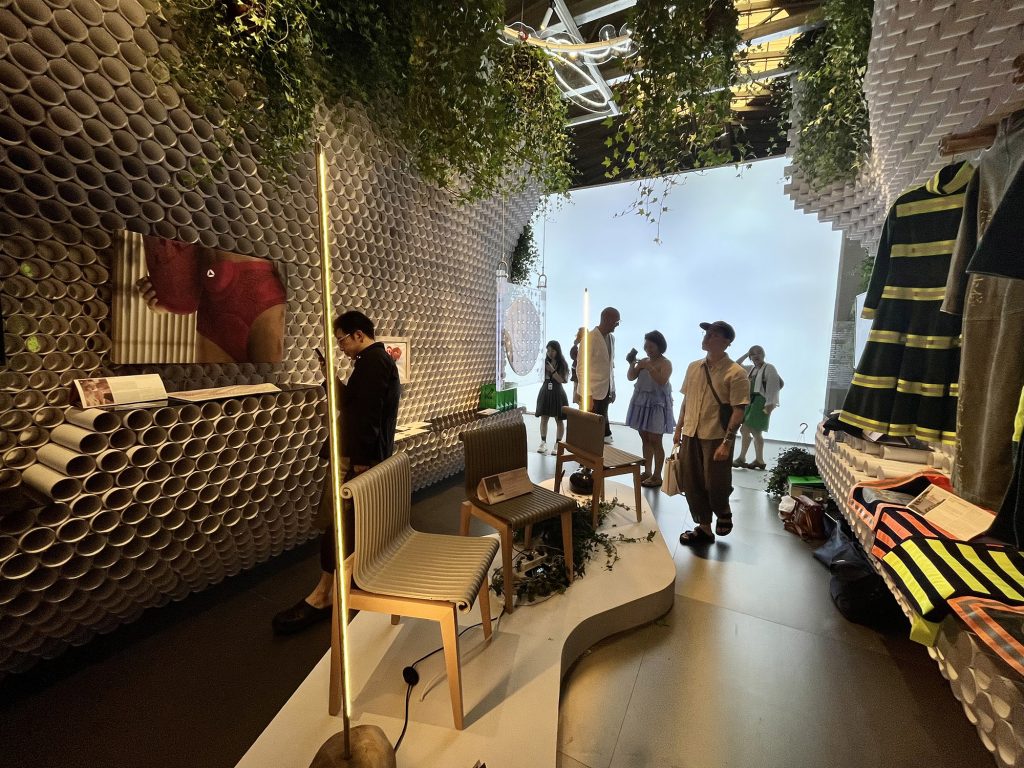
XJTLU’s exhibition ‘Design as Process’
Design Shanghai, which celebrated its 10th anniversary this year, took place at Shanghai World Expo Exhibition & Convention Center. The event attracted more than 600 brands from more than 40 countries across three halls, and explored how Eastern and Western design philosophies can work together. It also featured unique installations, an inspirational design forum and networking events.
As one of the few academic institutions participating in the event, XJTLU shared the novel and sometimes unexpected results of the academics’ design processes through nine different projects.
Massimo Imparato, Head of the Department of Industrial Design, says: “Design as Process revolves around a core question – to what extent can design be a tool for generating new knowledge and for creating new value?
“In fact, it is largely in the creation and testing processes where designers can leverage and optimise the inquisitive power of design as an investigative tool.”
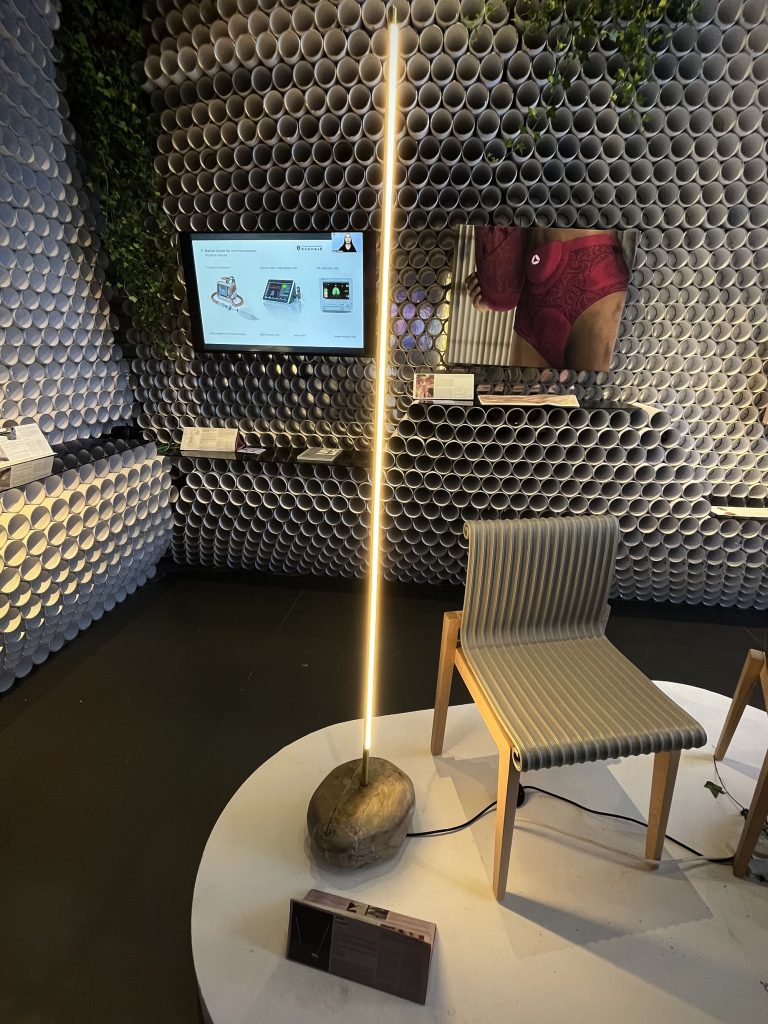
‘Lichengbei’ (left) and ‘Lovelock’ (right)
Imparato designed the works “Lichengbei” and “Lovelock”.
“Lichengbei” is a floor lamp using a natural stone as the base, and “Lovelock” is a stackable side-chair made of recycled plastic and wood that has been certified as being sourced from a responsibly managed forest.
“‘Lichengbei’ revolves around the idea to reconnect users, products, and places where raw materials are sourced in that of naturally shaped rocks,” Imparato says. “It allows users to establish visual and psychological connection with their roots.
“The ‘Lovelock’ chair aims at creating a product that saves virgin raw materials and reduces carbon dioxide emissions. It is the first item of the ‘Lovelock’ furniture set, which is currently under development.”
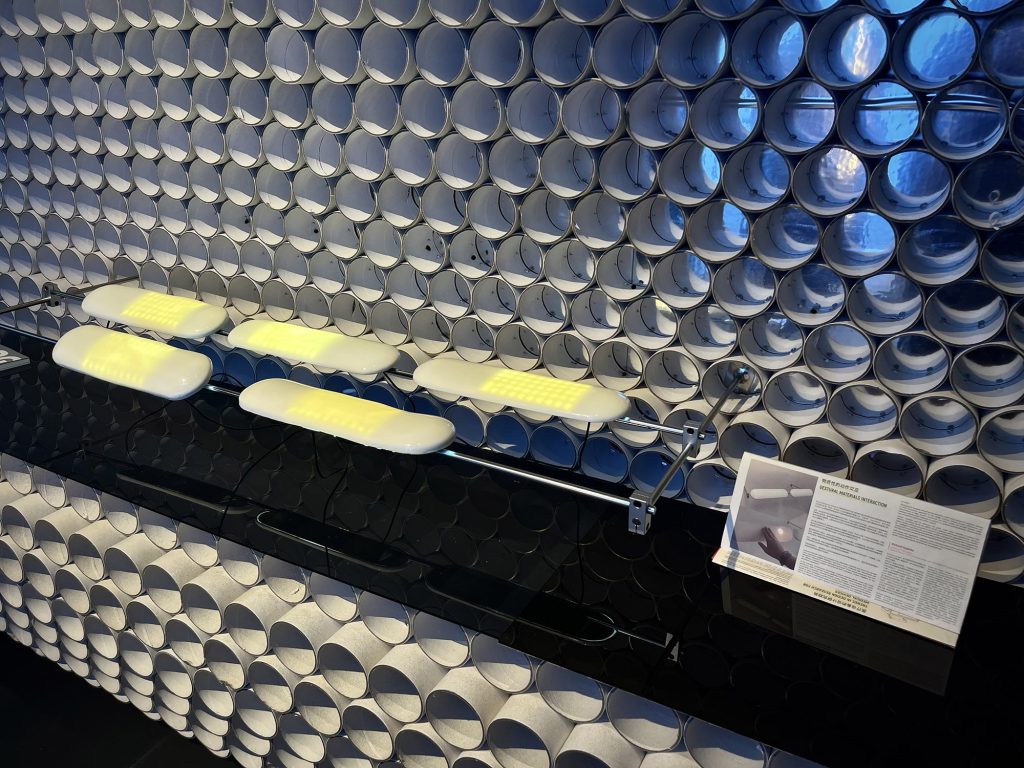
‘Gestural Materials Interaction’
Professor Richard Appleby from the Department of Industrial Design created “Gestural Materials Interaction”. The work considers how materials and forms can provide more expressive and tangible feedback for human interaction and touch, outside of the flat glass surfaces typically used for this purpose.
“Materials like ceramics and glass have higher quality surfaces, better conductive specifications and are more sensitive to touch, making them ideal materials for exploring how different curvilinear forms react to certain gestures and touches,” Professor Appleby says.
“These simple prototypes test how different material qualities and physical forms offer intuitive feedback to our gestural movements.”
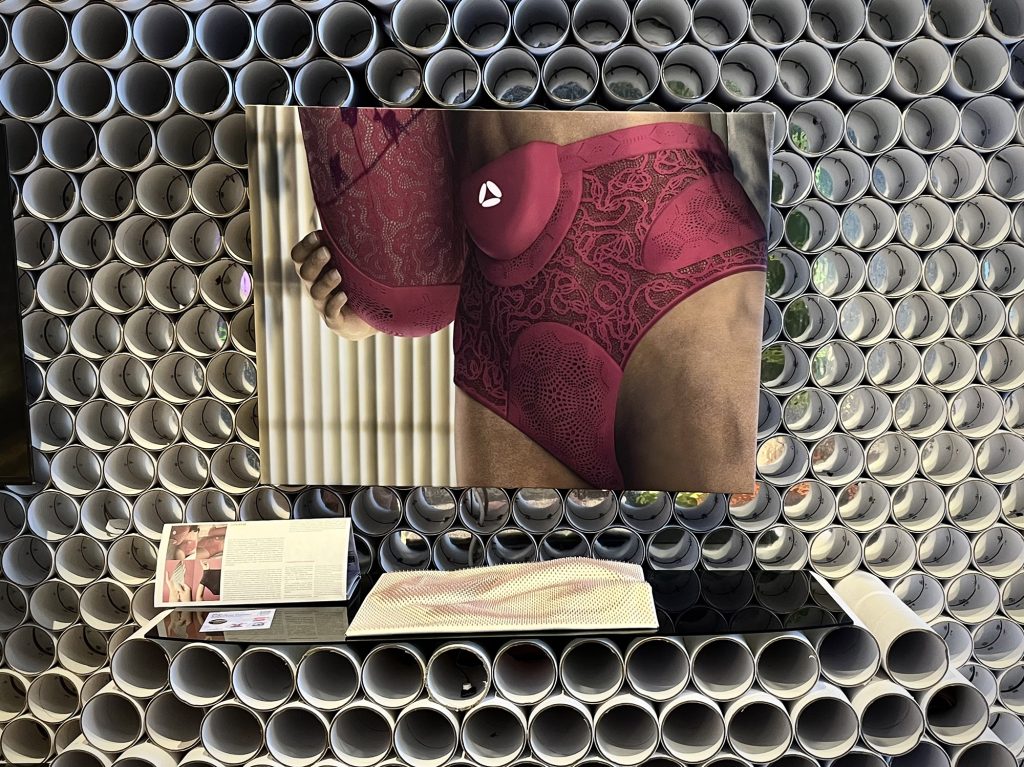
‘Lovewear’
The project “Lovewear” is co-designed by Emanuela Corti and Ivan Parati, both Associate Professors from the Department of Industrial Design. It is a device that combines user-centred design principles with soft robotics integrated into textiles.
Corti says: “‘Lovewear’ pursues a novel concept of implementing haptic stimulation by developing and using soft actuators embedded in knitted underwear.
“We simplified the fabrication process using thermoplastic coated and textile-based soft actuators, reducing the production time and the components’ cost, obtaining a more sustainable, affordable and democratic outcome.”
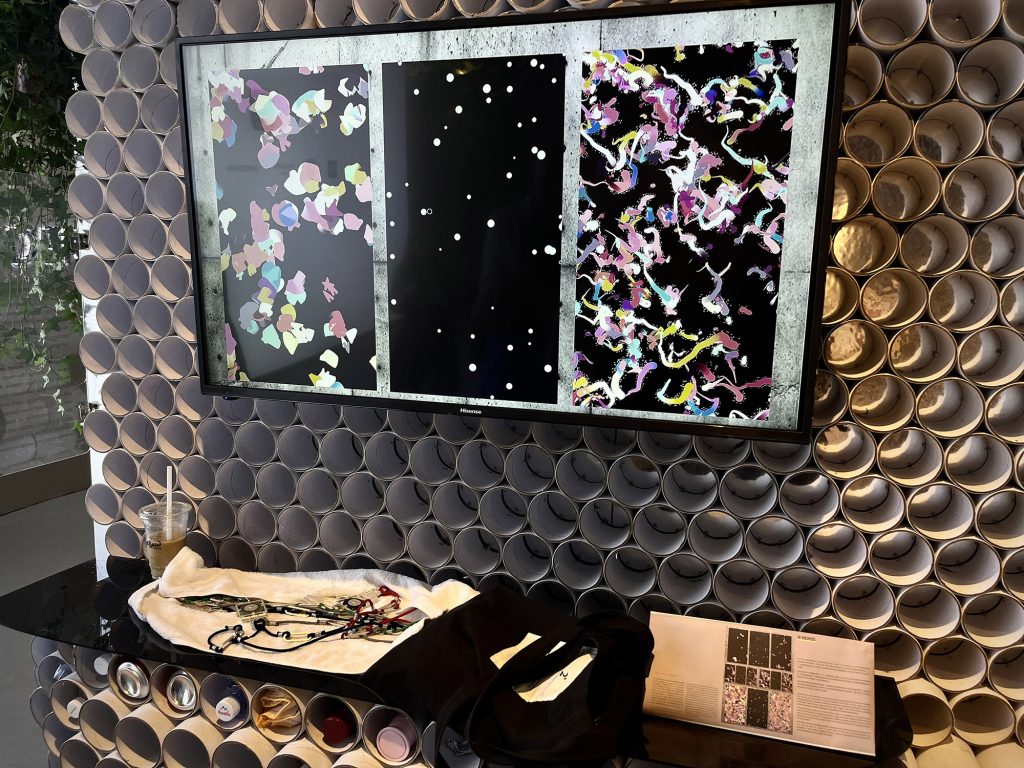
‘19 Memos’
Le Zhou, Lecturer in the Department of Industrial Design, created a documentary called “19 Memos”. The generative art project, which consists of three synchronised web-based canvases, recorded milestone events and news about the pandemic from 2019 to 2022, along with the general public’s changing attitudes.
“The work includes a multi-media documentary page and two other pages that synchronously generate dynamic abstract paintings that artistically visualise social observations,” Zhou says.
“Through the visually engaging format, ‘19 Memos’ presents the documentary in a more optimistic and thought-provoking way.”
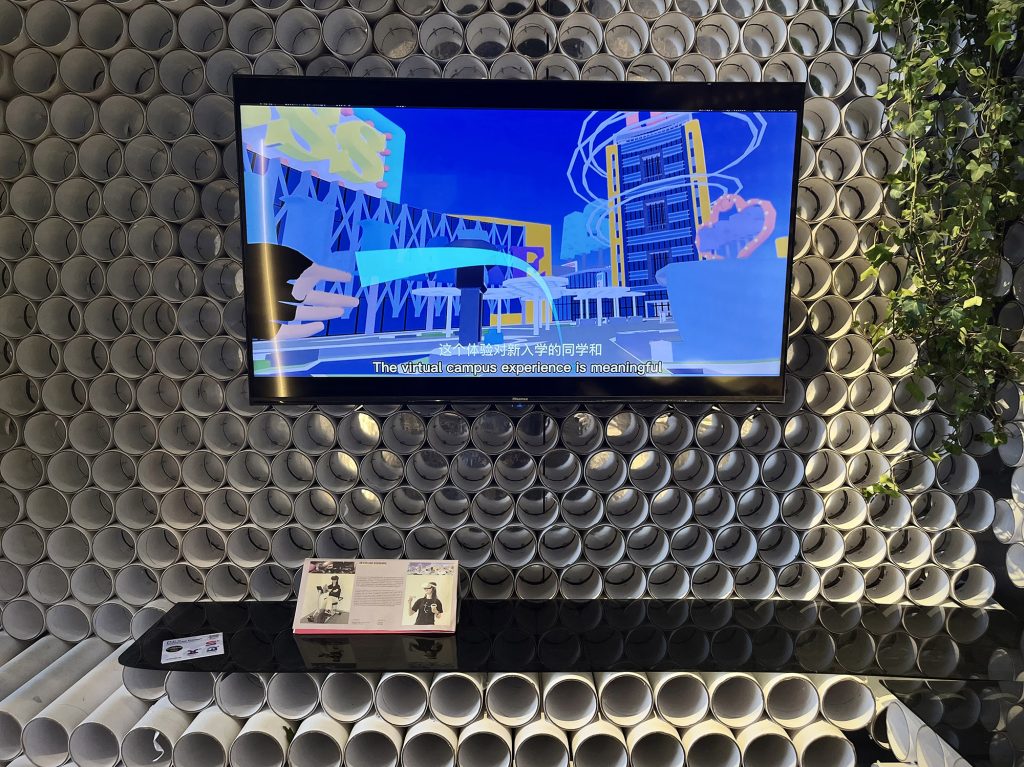
‘VR Cycling Exergame’ and ‘VR Virtual Campus’
Dr Mengjie Huang, Assistant Professor in the Department of Industrial Design, and Liu Wang, a PhD student, designed two projects: “VR Cycling Exergame” and “VR Virtual Campus”.
“VR Cycling Exergame” combines conventional indoor cycling with VR, while “VR Virtual Campus” allows users to stroll through the XJTLU campus by operating the controllers.
“The ‘VR Cycling Exergame’ can provide new ideas for applying VR technology in health and rehabilitation,” Dr Huang says. “It also shows the potential to improve the user experience of virtual exergames.
“For new students and visitors who want to know about XJTLU, ‘VR Virtual Campus’ can help them become familiar with the campus quickly and provide a fun and engaging campus experience.”
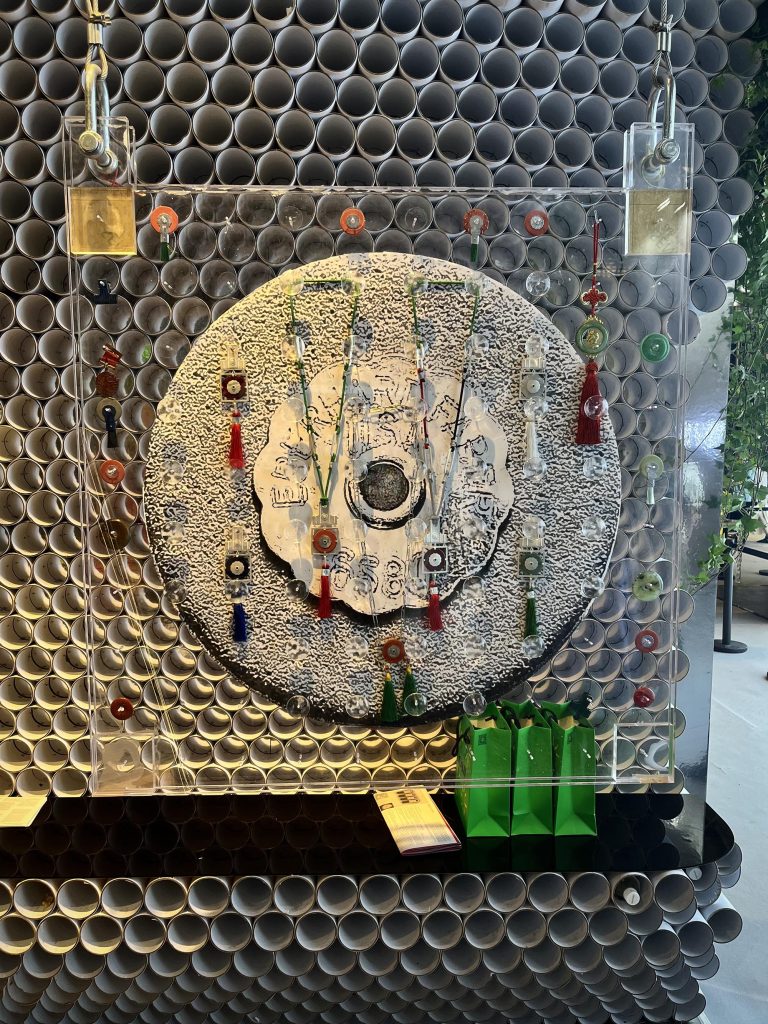
‘Heaven is a Circle’
“Heaven is a Circle” is a work-in-progress by Paul Denison, Senior Associate Professor in the Department of Industrial Design. The work intends to recognise the increasing hybridity of design language and the tendency towards cultural collisions which can lead to novel visual expressions.
Denison says: “The project places two circular disks – a Chinese stone disk dating from the Neolithic period and a rubber and aluminium typewriter eraser dating to the 1960s and 1970s – into a dialogue within the context of jewellery making.
“I hope to provoke discussion on the materials, forms and meaning of these artefacts, as well as issues of scarcity, craftsmanship, historicity, and value.”
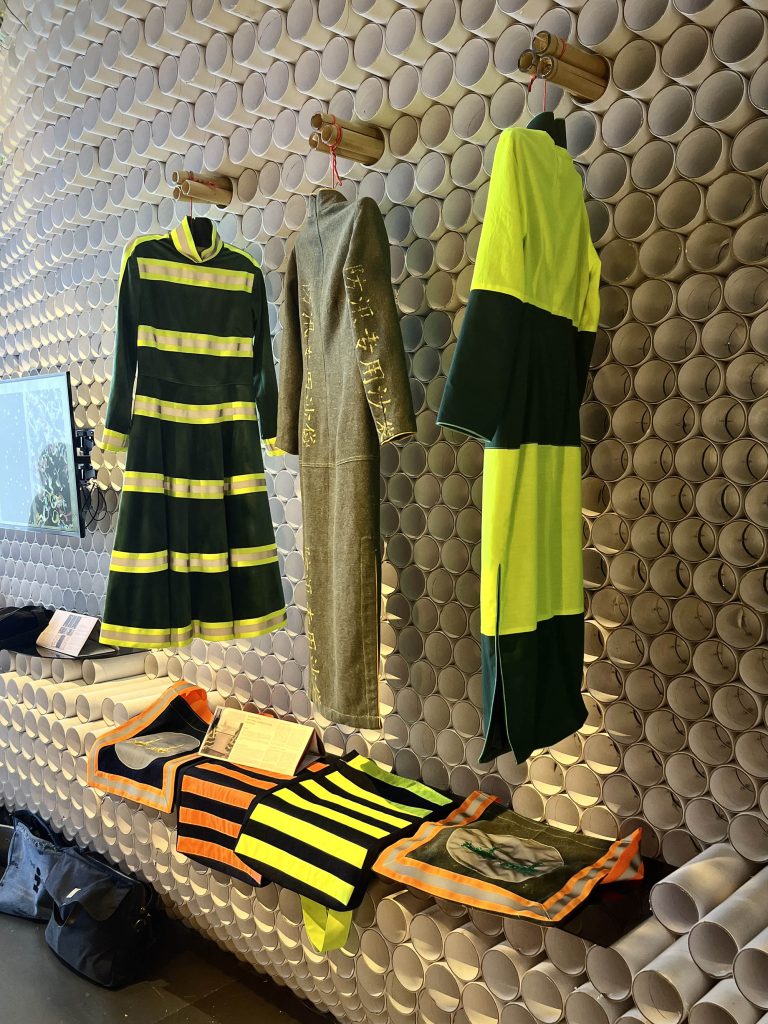
‘Twin Things: Shuangta Fashion Collection’
“Twin Things: Shuangta Fashion Collection” is a collection of garments designed by Kimvi Nguyen from the Department of Architecture and Vicente Esteban from the Department of Industrial Design. The work is inspired by the Twin Pagodas (Shuangta) located in the Old Town of Suzhou and the domestic workers there.
“This collection aims to reflect the spirit of Shuangta and its workers through wearable items that manifest the heart and soul of this special area of Suzhou,” Esteban says.
“We want to pay homage to the everyday people to show their importance as part of the human fabric of the Shuangta area.”
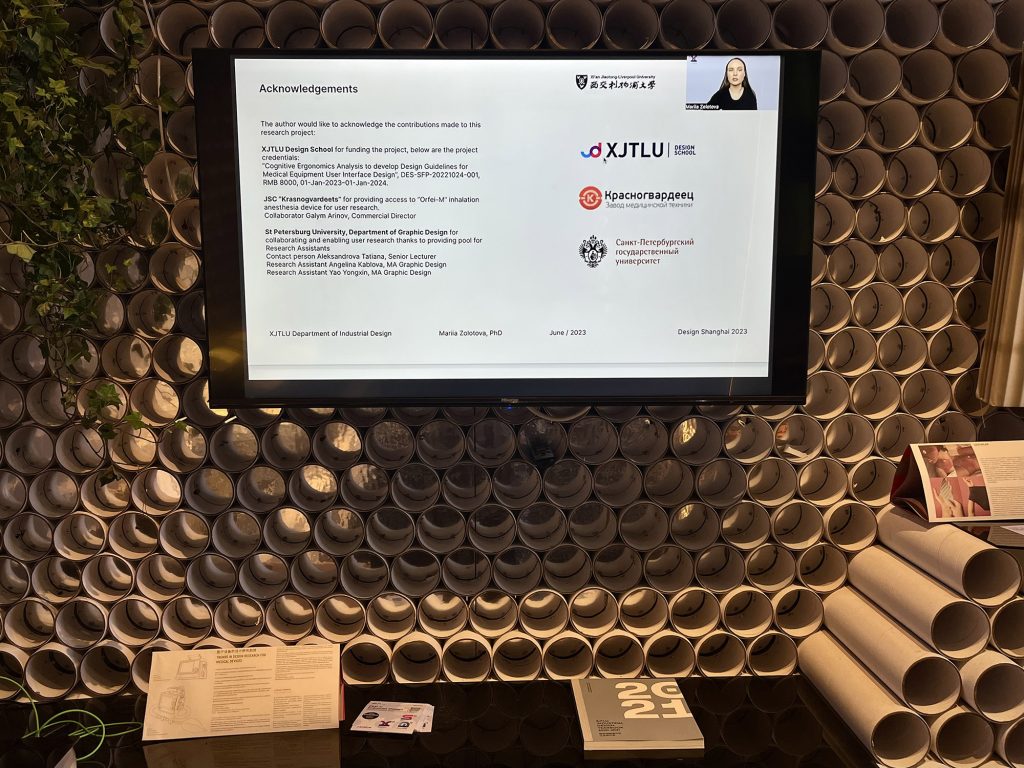
‘Trends in Design Research for Medical Devices’
Dr Mariia Zolotova, Assistant Professor in the Department of Industrial Design, presented “Trends in Design Research for Medical Devices”. The work points to future directions for designing medical devices.
She says: “Design research is increasingly involved in healthcare product development. This presentation shares the state-of-the-art methods to conduct design research for medical devices and provides examples of such research activities, as well as possible improvements.”
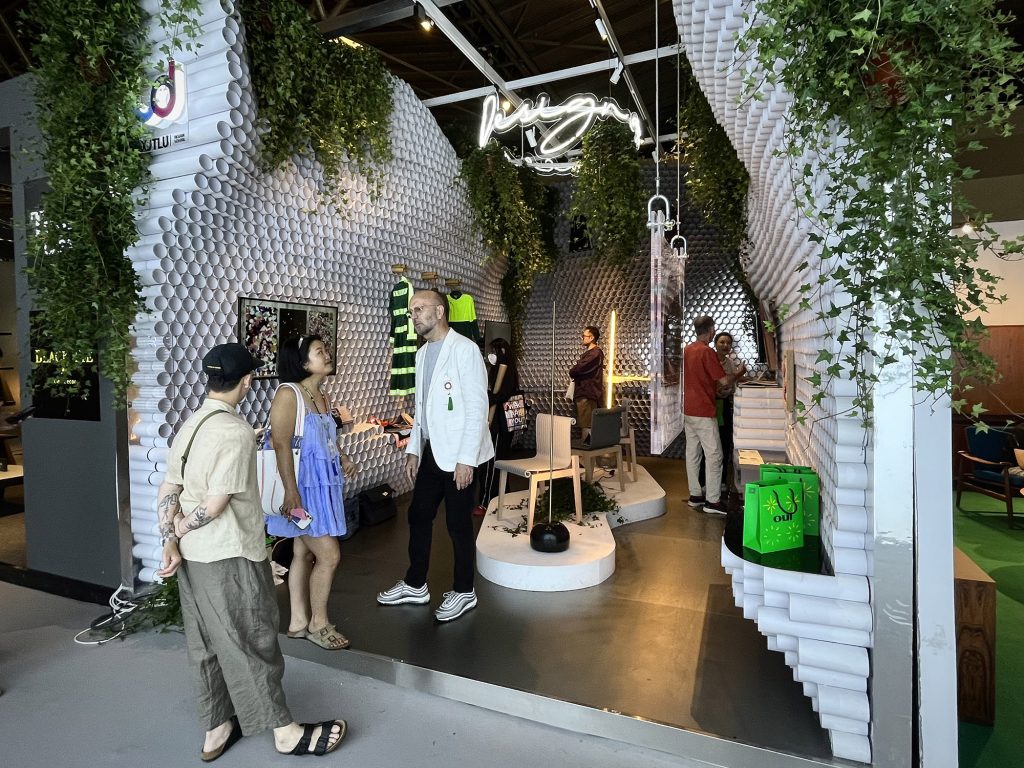
XJTLU’s booth “Design as Process”
The XJTLU academics say that through “Design as Process”, they hope practitioners, scholars, design lovers and the general public gained new insights into design trajectories.
“We aim at building a better understanding of local cultures and traditions, as well as bridging the past, present, and future,” explains Imparato.
“We’d also like to question current industrial practices so that we could enhance users’ experiences and promote cultural, social and economic value through our designs.”.
By Yi Qian
Edited by Xinmin Han and Tamara Kaup
Photos by Yi Qian
27 Jun 2023







